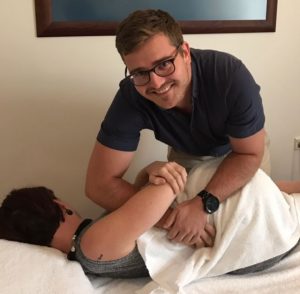Injuries in the game of AFL are increasingly common year after year, and can be the difference between a win and a loss. The best 22 players you can field will increase your chance of winning, wouldn’t it?
The best way to decrease the chances of sustaining an injury whether it be during pre-season, training or on game day, is to work on your body so it is ready for the tasks necessary to play at peak performance.
The game of AFL requires players to have a high level of aerobic endurance, the ability to be able to kick and handball with both sides of the body, and the ‘football brain’ in order to read the play. Whilst these are staples of the AFL player, the underlying flexibility, agility and core strength is what can elevate a player to the next level and equally important, reduce injuries!
The most common injuries sustained by AFL players according to the latest AFL Injury Survey are hamstring and calf strains, as well as knee and ankle injuries. These areas also coincide with the most missed games per club through injury.
A common myth around the sporting arena is that building muscle inhibits flexibility, and vice versa where being flexible requires less strength. This could not be further from the truth.
The most common strain to the football athlete occurs at the hamstring muscle/s. The strain occurs when the muscle in question has been overstretched and fibres of the muscle/tendon have torn. This tear can be classified as Grade 1, 2 or 3.
So this begs the question;
What causes a muscle to be overstretched?
A muscle simply overstretches when the force required by the muscle is greater than the force the muscle is able to supply.
“Hamstring injury prevention and rehabilitation programs should preferentially target strengthening exercises that involve eccentric contractions performed with high loads at longer musculotendon lengths” (Schache et. al, 2012).
What does this mean?
The calf and hamstring muscles are at risk of being overstretched when they have a lack of eccentric strength. A lack of eccentric strength alongside ‘stiffness’ and irregular intermuscular coordination cause a strain to occur.
OK, why is this the case and how do I get calf and hamstring eccentric strength?
Eccentric exercises have been shown to add sarcomeres (basic unit of striated muscle tissue) and increase muscle strength at longer lengths. These adaptations act to protect a muscle against injury by reducing the damage caused by repeated eccentric contractions. Studies 1 have compared the effects of eccentric versus concentric hamstring strengthening exercises and showed that increases in strength at longer muscle lengths occur only after bouts of eccentric exercises. Therefore, training the hamstrings eccentrically may give them the ability to resist the high forces experienced during high-speed running and jumping in AFL and to avoid disruption of the muscle fibers.
It is important to note, a player is at higher risk of up to 30% of a calf or hamstring strain if they have had one previously.
You can train your body to be its best by being specific about what you need. AFL players a strong core, an evenness around muscle groups, a good level of flexibility, and a high level of aerobic endurance in order to give them the best chance at being and more importantly staying, injury free.
Stay tuned for the next post regarding specifics into how you are able to achieve this!
 Dr Chris Fielder – Osteopath (B. Clin. Sc, M. Osteo)
Dr Chris Fielder – Osteopath (B. Clin. Sc, M. Osteo)
Chris is an Osteopath practicing at MOVE Osteopathy in Brisbane CBD. He has an interest in all things AFL and loves to help people playing AFL at all levels to perform better and enjoy their sport. If you love playing your footy have an injury or want to avoid injury and perform better make an appointment to see Chris ph: 3229 3661 and stay tuned for more great posts from Chris on this topic.
References:
- Kilgallon M, Donnelly AE, Shafat A. Progressive resistance training temporarily alters hamstring torque-angle relationship. Scand J Med Sci Sports 2007;17(1):18-24.
- Mjølsnes R, Arnason A, Østhagen T, et al. A 10-week randomized trial comparing eccentric vs. concentric hamstring strength training in well-trained soccer players. Scand J Med Sci Sports 2004;14(5):311-317.
- Schache AG, Dorn TW, Blanch PD, et al. Mechanics of the human hamstring muscles during sprinting. Med Sci Sports Exerc 2012;44(4):647-658.
